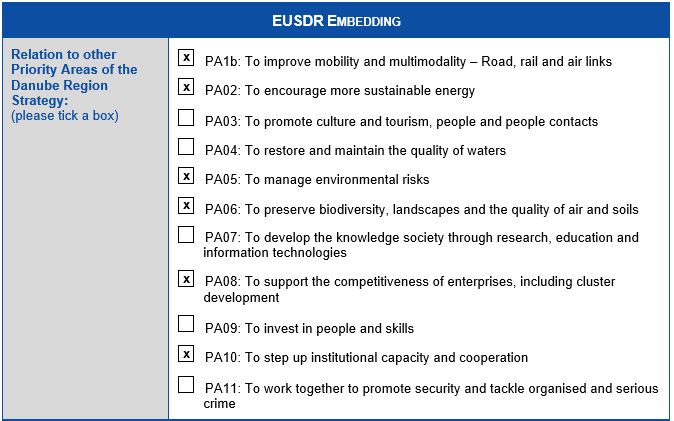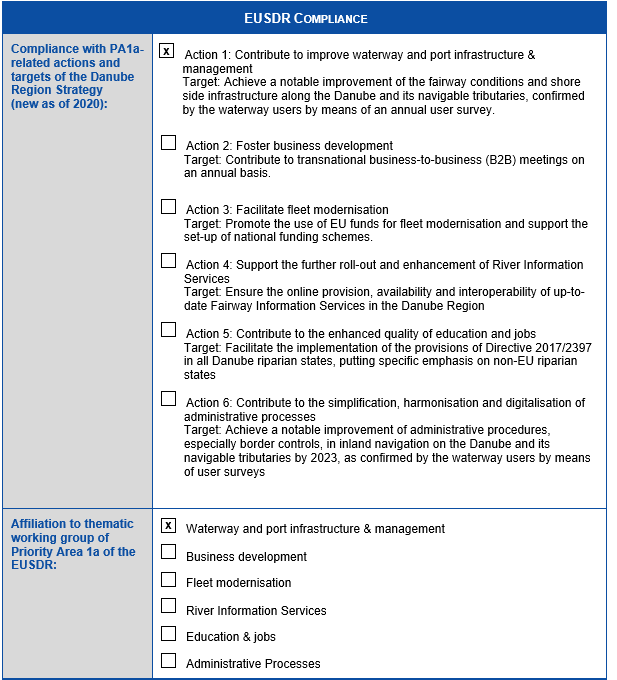BASIC PROJECT DATA
Project ID: PA1A148
Project website: www.preparingfairway2.org

NEED AND ADDED VALUE FOR THE DANUBE REGION STRATEGY
550 million tonnes of freight were moved on European inland waterways in 2018. Along the whole TEN-T core network corridor “Rhine-Danube”, the inland waterway transport performance accounted for 135 billion ton-kilometres in 2018. Navigation on the European Inland waterways is highly internationalised, as 75% of EU waterway traffic crosses borders. Existing bottlenecks and unreliable transport infrastructure in one country have significant negative impacts on the whole Danube corridor.
Despite the well-known advantages of Inland Waterway Transport compared to other transport modes, a stable loss in market share is taking place. A major driver for the losses is seen in lacking reliability of the waterway infrastructure and existing bottlenecks – such as insufficient fairway depths and widths or outdated infrastructure in mooring places or at locks. These obstacles usually have an international dimension due to average transport distances along the Danube of around 600 km.
The shortcomings regarding infrastructure represent a severe threat to the success of waterway transport in the Danube corridor and all over Europe. Consequently, achieving some of the main European transport policy goals is at risk if these shortcomings are not tackled.
OBJECTIVE(S) OF THE PROJECT
The general objectives of the trans-European network are to contribute to:
- Cohesion: through accessibility and connectivity, reduction of infrastructure quality gaps, etc
- Efficiency: through the removal of bottlenecks, interconnection, etc.
- Sustainability: through clean transport, reduction of external costs, etc
- Increased benefits for its users: through meeting transport needs, increased safety, etc.
Specific inland waterways transport infrastructure requirements include (among others) the following targets:
- Comply with the minimum requirements for class IV waterways (ECMT)
- Preserve a good navigation status
The proposed Action contributes to all of these objectives – it contributes to
- reducing infrastructure quality gaps and improving efficiency: by preparing interventions to eliminate bottlenecks on the Serbian-Croatian common Danube stretch, by preparing infrastructure investments to establish high-quality mooring places along the Danube
- increases sustainability through fostering inland navigation as such, increasing its capacity and reducing resource need for surveying trips, by preparing innovative measures regarding mooring places infrastructure, by preparing concepts for improved stakeholder integration; and
- increases the benefits for its users (quality and availability of mooring places).
The proposed Action represents a major step in the implementation of the Corridor Work Plan and will trigger additional investments.
CONDUCTED AND PLANNED PROJECT ACTIVITIES
Regulation (EU) No 1315/2013 sets minimum requirements for rivers and canals to be reached by 2030 and requires Member States to maintain a Good Navigation Status thereafter. In line with these requirements, the proposed Action will prepare the foundation for “FAIRway Danube 2”, the planned multibeneficiary action under CEF2 as of 2021, which builds on the CEF-funded flagship action “FAIRway Danube”. “FAIRway Danube” has already been delivering tangible results in 6 Danube countries since 2015. The proposed Action will give a significant impetus to the further acceleration of inland waterway works in the Rhine-Danube Corridor.
The proposed Action consists of following activities:
- Monitoring and inventory of navigational and environmental parameters along the common Croatian and Serbian Danube stretch as input to the Modelling Activity (Act 2) and the development of the River Basin Management Plans in Croatia
- Modelling, multi-criteria analysis and a multidisciplinary stakeholder forum will prepare the ground for future works interventions to tackle navigational bottlenecks on the common Croatian and Serbian river stretch of the Danube
- Specification of new functionalities of the transnational Waterway Monitoring System WAMOS in order to enhance services for administrations and waterway users
- Definition of a concept for stakeholder involvement and cooperation, in particular the inland waterway transport sector, ports and terminals as well as the shipping industry, in order to enhance the interaction between waterway administrations and users.
- Analysis of requirements for upgrade/construction of mooring places in Austria, Croatia and Serbia and development of good-practice concepts on mooring places on the Danube and its navigable tributaries in order to stimulate future works.
TRANSBOUNDARY IMPACT
The project addresses the Core Network Corridor Rhine – Danube (in particular the pre-identified projects Danube waterway from Kehlheim – Consţanta/Midia/Sulina and Sava river). 42% of the navigable Danube and large parts of the Sava constitute state borders. With national stretches between 138 and 1,075km and average transport distances above 600km on the Danube,
actions related to fairway conditions and waterway infrastructure necessarily have to be of a cross border nature.
Due to the absence of alternative routes, infrastructure limitations on the common Serbian-Croatian Danube stretch affect the whole Danube waterway axis. Thus, they represent a threat to the industries in the Rhine-Danube Corridor and need to be eliminated. For example, the Austrian section of the Danube is used by all vessels navigating from the Upper Danube to towards the Middle and Lower Danube and vice versa (and thus sailing on the Croatian/Serbian common stretch) with an average 7,2 million transported tons in 2018 (export, import and transit of
goods). In 2017, 21% of the goods transported on inland vessels in Austria were exported to or imported from Serbia, Rumania, Bulgaria, Moldova or the Ukraine. In addition, cruises between Germany and the Danube Delta are very popular with tourists and show enormous growth rates. It is thus essential to implement activities to upgrade the common Serbian-Croatian Danube stretch.
The Activities within the project will also prepare the foundation for “FAIRway Danube 2”, the planned multi-beneficiary action under CEF2 as of 2021. Therefore, they are relevant for all countries along the Danube waterway.
PROJECT BENEFICIARIES / TARGET GROUPS
Beneficiaries:
- Federal Ministry of Climate Action, Environment, Energy, Mobility, Innovation and Technology (AT)
Designated implementing body: via donau – Österreichische Wasserstraßen-Gesellschaft - Ministry of the Sea, Transport and Infrastructure (HR) Designated implementing body for issues concerning mooring places:
Lučka uprava Vukovar - Ministry of Construction, Transport and Infrastructure, Directorate for Inland Waterways (RS)
Target groups:
- Waterway users (e.g. operators of cargo and cruise vessels, fleet and terminal operators)
- Environmental (non-governmental) organisations such as WWF
- European Commission, in particular DG MOVE, INEA and DG Environment
- Danube Commission and Sava River Basin Commission
- National Governmental authorities, such as Ministries of Transport, Ministries of Environment
- Waterway and Canal Administrations and lock operators along the Danube
STATUS AND TIMEFRAME
Start date: July 1st, 2020
End date: December 31st, 2024
FINANCING
Total budget: 3,292,000 EUR
EU funds: 2,130,400 EUR are funded by CEF
PROJECT TEAM
Project leader:
- Federal Ministry of Climate Action, Environment, Energy, Mobility, Innovation and Technology (AT)
- Designated implementing body: via donau – Österreichische Wasserstraßen- Gesellschaft mbH
Address: Donau-City-Straße 1, 1220 Vienna, Austria
Project partner(s):
- Beneficiary Croatia:
Ministry of the Sea, Transport and Infrastructure (HR) Designated implementing body for issues concerning mooring places: Lučka uprava
Vukovar - Beneficiary Serbia:
Ministry of Construction, Transport and Infrastructure, Directorate for Inland Waterways (RS)
PROJECT ENVIRONMENT
PROJECT CROSS – REFERENCE
FAIRway Danube (PA1A108)and FAIRway works! in the Rhine-Danube Corridor (PA1A147)
STRATEGIC REFERENCE
- Third Rhine-Danube Corridor Work Plan of the European Coordinator (February 2018).
- NAIADES II
- “EU Strategy for mobility and transport: measures needed by 2030 and beyond” (currently under development)
- Guidelines towards achieving a Good Navigation Status (GNS)
- Fairway Rehabilitation and Maintenance Masterplan for the Danube and its navigable tributaries
RELEVANT LEGISLATION
- TEN-T Guidelines (e.g. Reg. 1315/2013)
- COM(2019) 640 final “European Green Deal”
EUSDR EMBEDDING

EUSDR COMPLIANCE
 META DATA
META DATA
Data provided by: ViaDonau (Andreas Bäck – 16.10.2020)
Download pdf.

